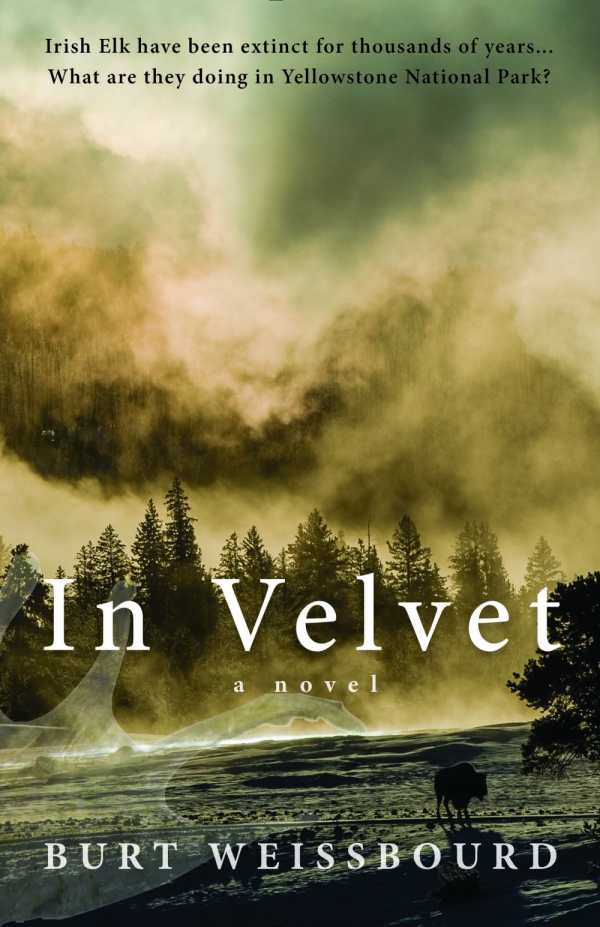In Velvet
This thrilling novel has a breathless pace that combines science and nature to create nail-biting tension.
Bears are hibernating in summer and Irish elk have returned from extinction. With such strange occurrences happening in Yellowstone Park and a vendetta-fueled sheriff who may be behind it all, a bear biologist and an ex-detective must find the cause before the entire area begins to suffer. Throughout his thriller, In Velvet, Burt Weissbourd builds a story wrought with tension while also painting a vivid landscape.
Rachel has been tracking bears in Yellowstone Park for years, but when her most beloved bear, Wholly Bugger, begins building a den in the middle of summer, she knows something is not right. It isn’t long before other park rangers compare notes, each observing strange occurrences stemming from hormone changes in the wildlife. The local sheriff directs his accusations at Rachel’s ex-boyfriend, Rainey, who has evidence of the sheriff’s corrupt dealings. Rachel and Rainey—along with a newcomer, Jen, who wants to learn the truth about her husband’s death—set out on a dangerous journey to discover the source of the changes.
The cover art, along with photos peppered throughout the novel, highlights the beauty of the park and the captivating wildlife. Weissbourd has a gift for details, for showing the expansive landscape while pinpointing the elements that bring Yellowstone to life. “The sun was articulating the detail of the meadow in a fine warm light. A lone bison grazed near the tree line and wildflowers showed colors she’d never seen before.” These descriptions, along with the photos, bring Yellowstone to life, making the park into a foundational character of the novel.
Weissbourd’s ability to beautifully set a scene does not detract from the fast-moving plot. The writer deftly balances both the beauty of the wilderness and the occasional ugliness of human nature that drives the story. The plot twists build to a crescendo and, all the while, the land and wildlife are kept at the forefront. To accomplish this, the writer handles intense moments with a patience that draws out the tension and narrows the focus, as in a scene where a bear is preparing to charge Rachel and Jen: “His lower lip curled back to reveal his huge lower canines at the back of his salivating mouth, his head was down and rolling, and his canines were clacking as he made one more blowing sound. Then he charged.”
A large cast of characters play roles in the story, and Weissbourd gives most of them an opportunity to share their perspective. Seeing each character plotting to save themselves helps build a tension that makes the novel hard to put down. The drawback from exploring so many perspectives is that, at times, it’s hard to discern when the point of view changes to a new character, and this can create a speed bump in the novel’s blazing velocity.
In spite of these momentary slowdowns, this thrilling novel has a breathless pace that combines science and nature to create nail-biting tension. The writer navigates scientific terms and processes in a clear, logical manner, making it easy to believe these imagined plot twists are a likely possibility in the real world.
Reviewed by
Kandy Alameda
Disclosure: This article is not an endorsement, but a review. The publisher of this book provided free copies of the book and paid a small fee to have their book reviewed by a professional reviewer. Foreword Reviews and Clarion Reviews make no guarantee that the publisher will receive a positive review. Foreword Magazine, Inc. is disclosing this in accordance with the Federal Trade Commission’s 16 CFR, Part 255.

